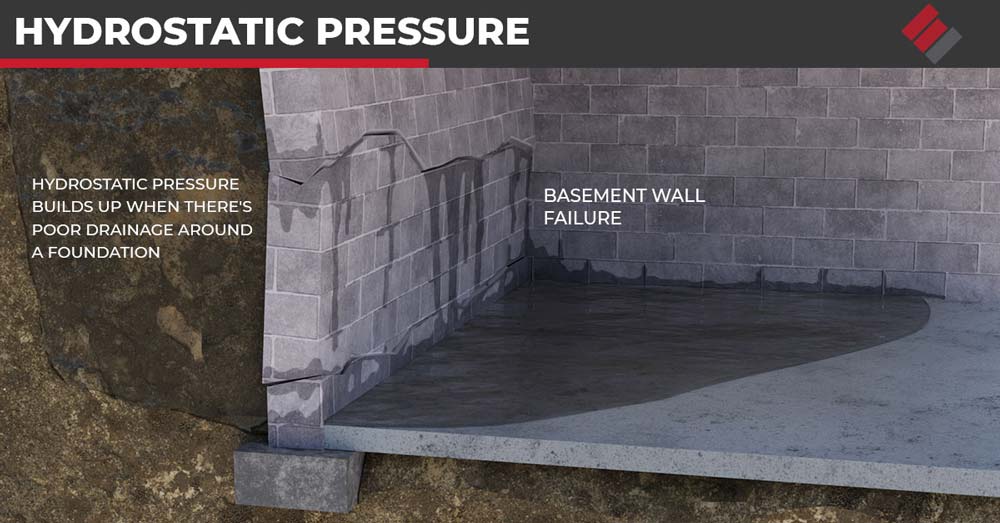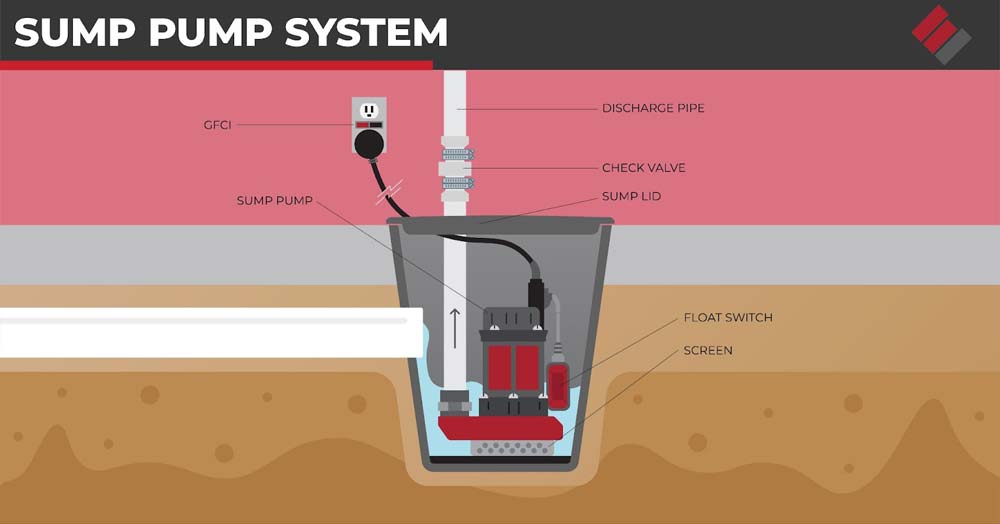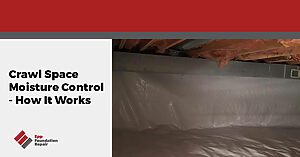Many homeowners in Nebraska and throughout the Midwest are familiar with the benefits and problems associated with having a basement. They can be a real asset when they are dry and usable but, all too often, they are a damp, dingy part of the home.
I’ll admit that dealing with a wet basement can be a real struggle, but there are options that can help your basement to be dry. The options may differ from one home to another but, with Epp Foundation Repair on the job, your wet basement can turn into a dry space.
Just like any job that can improve your home, there are options available to keep the basement dry. We will consider those options in this article, along with why you should consider calling Epp Foundation Repair in the first place.
Understanding Hydrostatic Pressure
We live in a world that is constantly putting pressure on us. This is more than the stress we may feel living day to day, there are also physical forces that can strain our foundation walls to the limit.
This type of pressure is known as hydrostatic pressure and it is a common problem in Nebraska. Due to expansive soil, the pressure may be extreme when the weather and the ground are wet. Other issues can include improper grading, roof runoff, and even nearby bushes and trees.

Like a sponge, the soil will expand when it takes in water. It expands in all directions, including pushing against your foundation walls. The pressure it puts on the walls is known as hydrostatic pressure and it can damage the wall over time. Something similar can happen to the concrete slab floor.
Hydrostatic pressure is not likely to destroy your foundation all at once. It can continue to put gradual pressure on the foundation walls, causing them to crack and eventually, to buckle or even fail.
Is A Wet Basement Normal?
When you go down into your basement, do you encounter an area with damp air, musty smells, and perhaps even wet areas on the walls and floors? This is a common problem in Nebraska, as well as throughout the Midwest.
Most of us consider a wet basement to be a fact of life, but even if wet basements are common, they should never be considered normal. Despite the issues you are facing there is a solution.
Ignoring a problem with a wet basement is only going to cause additional issues for you and your family. This could include mold, high humidity throughout the home, and lower air quality for you and your family. Installing a basement floor drain is a step that moves things in the right direction.
Basement Floor Drain Systems Installed By Epp Foundation Repair
A basement floor drain can be different from one home to another. At a most basic level, it is a simple drain in the floor to catch water that might get in from a flood or perhaps if the water heater leaks. The basement floor is sloped to drain the water in that direction.
A basement floor drain system can accomplish something similar, although it works anytime that is water in the soil, not just on the basement floor. Here are the two basic types of basement floor drains.
1. Interior Drain Tile Systems: Installing an interior drain tile system involves using a jackhammer to remove the slab near the foundation walls. A channel is then dug into the soil underneath, and it is filled with gravel.
A 4″ perforated pipe is put in the channel, and it is then filled with more gravel. The pipe will either drain from the basement to a lower-lying area or it will drain into a sump pit and be pumped out of the basement and away from the foundation walls.
2. Exterior Drain Tile Systems: An exterior drain tile system is very similar to an interior drain tile system but there is a lot more work involved in installing it. This type of system is better installed during the initial construction process but it can also be installed later.
In many cases, a piece of permeable fabric is also placed over the pipe in an exterior drain tile system to keep soil from clogging the pipe.
The installation of both interior and exterior basement floor drain systems is a lot of work. It is not something that a homeowner should consider doing on their own.
What Causes Wet Basements?
The obvious answer to what causes wet basements is excess water in the surrounding soil. In a perfect world, water would drain from the soil properly while also maintaining an appropriate level of moisture.
Too much water in the soil results in hydrostatic pressure, which can damage the foundation walls and floor (more on that later). It can also be caused by one of the following problems.
- Incompetent Soil: Some types of soil tend to hold onto water and expand when they get wet. It is the expansion that puts pressure on the walls. This is known as expansive soil and it is common in the Midwest.
- Grading Problems: The lot must be graded so that water drains away from the home. If it is not graded in that direction or if there is not enough of a grade, water may actually run to the foundation, resulting in this issue. For more information check our post about – landscaping next to house foundation.
- Trees and Plants: Any plants that require regular watering should not be planted too close to the foundation. A minimum distance of 10 feet is suggested or else the watering process could cause the soil to get waterlogged.
- Roof Runoff: Keeping the gutters clean and installing gutter downspout extensions keeps the roof runoff from draining directly into the soil by the foundation walls.
For more information, see how to keep water away from house foundation.
Do You Need A Sump Pump?
There are two typical options for drainage with a basement floor drain. If the property allows it, you could drain it to a lower area using gravity. Otherwise, a sump pump may be needed.
A sump pump removes water from the lowest part of the basement. It can pump the water up and out of the basement to an area away from the foundation.
Both interior and exterior basement floor drain systems can be directed into a sump pit located in the basement. When the water reaches a certain level, the pump is activated until the water level is at a pre-set lower level.

There are two different types of sump pumps. They also come in different strengths, measured by horsepower. It is also usually a good idea to choose a sump pump with a battery backup, just in case the power goes out.
- Submersible Sump Pump: This is a convenient option because you can connect it to power and install it in the bottom of the sump pit. They tend to be a powerful pump that runs without many problems.
- Pedestal Sump Pump: If you are looking for an affordable sump pump that is easy to install and maintain, then a pedestal sump pump is one to consider. They don’t tend to have the power of a submersible, so they may take longer to drain the sump pit.
Additional Options To Keep Your Basement Dry
A basement floor drain system is a great way to change a damp basement into a dry part of the home. There are also other options offered by Epp Foundation repair that can keep your basement dry.
Vapor Barrier: Sometimes, a vapor barrier is installed to keep water from seeping into the basement through the foundation walls. Even if water does get through, the vapor barrier will redirect the water to the basement floor drain.

Crack Repair: Repairing any structural cracks can help keep water out of the basement. We can use carbon fiber to strengthen the wall and keep the crack from expanding. epoxy injections can then permanently fill the crack.
Keeping the basement dry is important for the basement and the rest of the home. Installing a basement floor drain is an essential part of the process, one that can leave you with a dry, usable basement that will benefit you and your family.
When your home encounters challenges such as bowing basement walls, foundation cracks, sloping floors, or sticking windows, turn to Epp Foundation Repair for dependable solutions. As your local foundation experts Omaha with over 20 years of experience, we are dedicated to addressing and resolving various foundation concerns. The trust of Omaha residents and business owners in Epp Foundation Repair stems from our commitment to providing reliable solutions for their foundation problems. Reach out to us today to schedule a free inspection and initiate the path toward a stable and secure foundation for your property.







